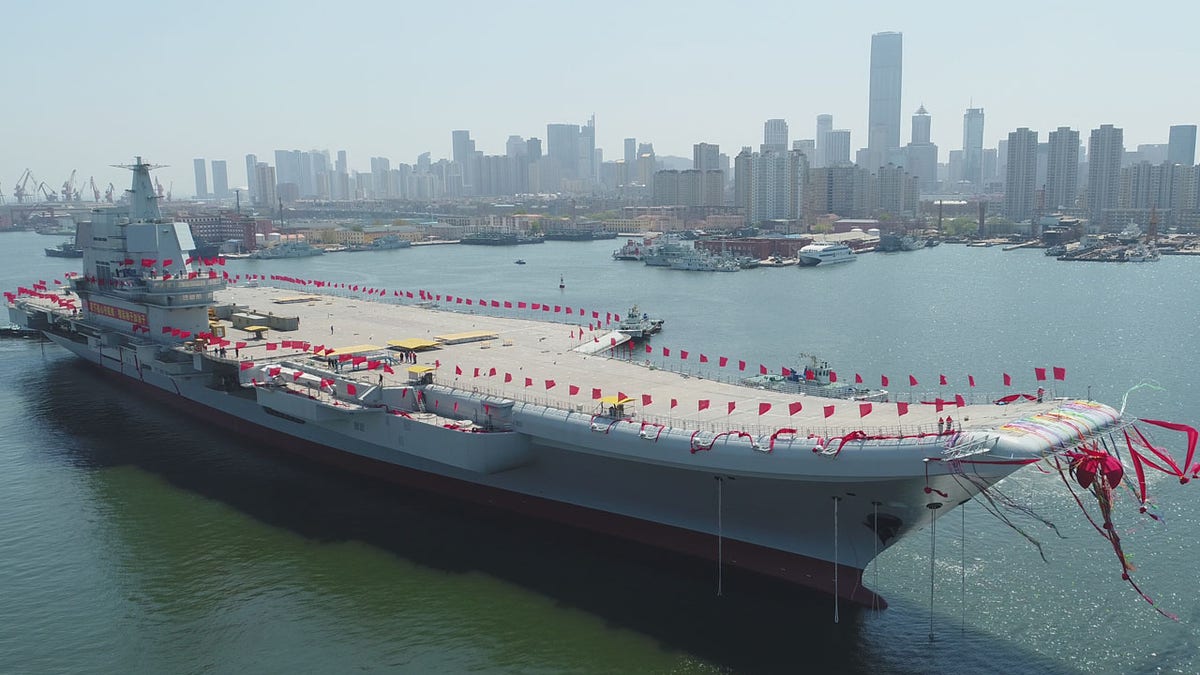
In this photo released by China's Xinhua News Agency, a newly-built aircraft carrier is transferred from dry dock into the water at a launch ceremony at a shipyard in Dalian in northeastern China's Liaoning Province, Wednesday, April 26, 2017. (AP)
China launched its second aircraft carrier—and the first one entirely home-built—taking another stride in its quest for a world-class navy that can protect Chinese economic and security interests far from its shores.
The new carrier, festooned in red flags and ribbons and with a bottle of champagne smashed over its bow, slid from a dry dock into the water in a shipyard ceremony in the northeastern port city of Dalian on Wednesday, state media reported. About two years of sea trials are expected before the still-unnamed ship becomes fully operational, Chinese and Western military experts say.
AIR FORCE TEST-FIRES ICBM TRAVELING 4,000 MILES TO SOUTH PACIFIC
"We aim to safeguard our sovereignty and state interests and world peace by developing our military forces including maritime forces," said a Chinese Foreign Ministry spokesman at a regular news briefing on Tuesday.
China has been rapidly modernizing and expanding its naval operations over the last two decades, partly to ensure military superiority over Asian neighbors, some of which contest Chinese territorial claims, and to prevent the U.S. from intervening in regional conflicts.
India has one active carrier-a refurbished Soviet ship-and launched its first indigenous model in 2013, but that ship is not expected to become operational until the early 2020s. Japan's has two large helicopter carriers but none capable of launching fighter jets.
China has also been sending ships and submarines deep into the Indian and Pacific Oceans in recent years. That is part of a longer term strategy to establish itself as a global military power capable of protecting its overseas economic interests, especially oil and gas supplies, as well as its expatriate citizens, military experts say.
While a long way from matching the U.S. navy, which has 10 carriers and decades of experience operating them, China's carriers significantly boost its efforts to build a "blue water" navy, capable of conducting combat and other missions far from its shores.
